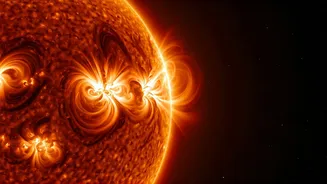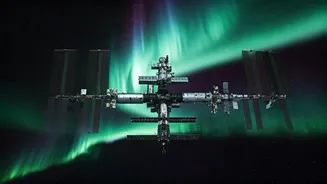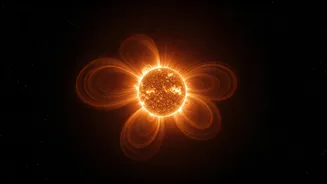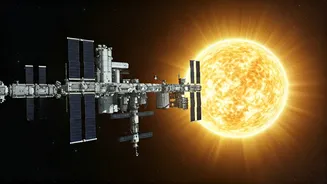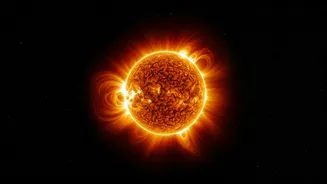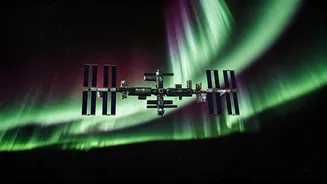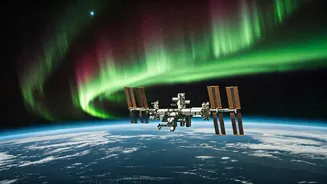Solar Storms Unveiled
Solar storms, also known as solar flares and coronal mass ejections (CMEs), are eruptions of energy from the Sun's surface. These events release vast amounts
of radiation and charged particles into space. When a CME reaches Earth, it can interact with our planet's magnetic field, leading to geomagnetic storms. Such storms can disrupt satellite communications, power grids, and even cause auroras. The frequency and intensity of solar storms vary with the 11-year solar cycle, with periods of high activity followed by quieter phases. The ability to predict these events is crucial for protecting technological infrastructure and ensuring the safety of astronauts. The James Webb Telescope may have spotted the first stars of the universe.
Astronauts: Safe Shelters
The International Space Station (ISS) provides a unique environment for astronauts to conduct research and live in space. However, during powerful solar storms, the ISS crew must take protective measures. This often involves moving to areas within the station that provide better shielding from radiation. The ISS has specific modules, or areas of the station, with reinforced walls designed to offer more protection. These shelters help minimize the astronauts' exposure to harmful radiation during the storms. Astronauts are also equipped with radiation-monitoring devices to track their exposure levels and maintain awareness of their safety. The prompt actions taken underscore the importance of protecting astronauts from space weather events.
Earth's Technological Vulnerability
Geomagnetic storms caused by solar activity can significantly impact technology on Earth. Power grids are susceptible to surges, potentially causing widespread blackouts. Satellites in orbit are also at risk. The radiation and energetic particles can damage electronics, leading to communication disruptions and data loss. Navigation systems, used by both commercial and military interests, can become inaccurate or unusable. Space weather forecasting, using data from satellites and ground-based observatories, is essential for mitigating risks. Early warnings can allow operators to take protective actions, such as shutting down vulnerable systems or rerouting satellite communications. Continuous monitoring ensures that necessary precautions are maintained to reduce disruptions.
Scientific Advancements & Research
The study of solar storms and their effects is an active area of scientific research. Scientists use various instruments, including specialized telescopes and spacecraft, to observe the Sun and monitor its activity. Sophisticated computer models simulate solar events and their impact on Earth's magnetosphere and atmosphere. These models aid in developing more accurate forecasting. Data analysis is a crucial component of this work. Scientists use the data from satellites, combined with ground-based observations, to understand the physics of solar flares and CMEs. Improved understanding allows for better predictions, leading to enhanced preparedness. Ongoing research also explores the long-term effects of space weather, assisting in the development of more resilient technologies.
